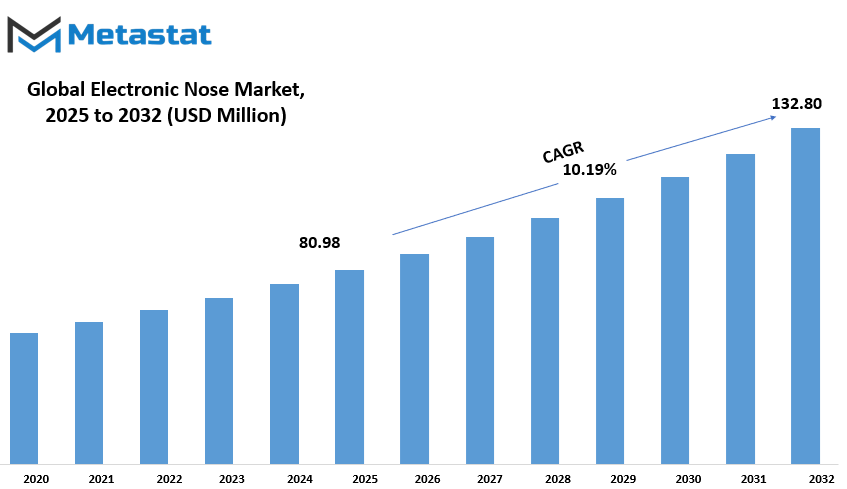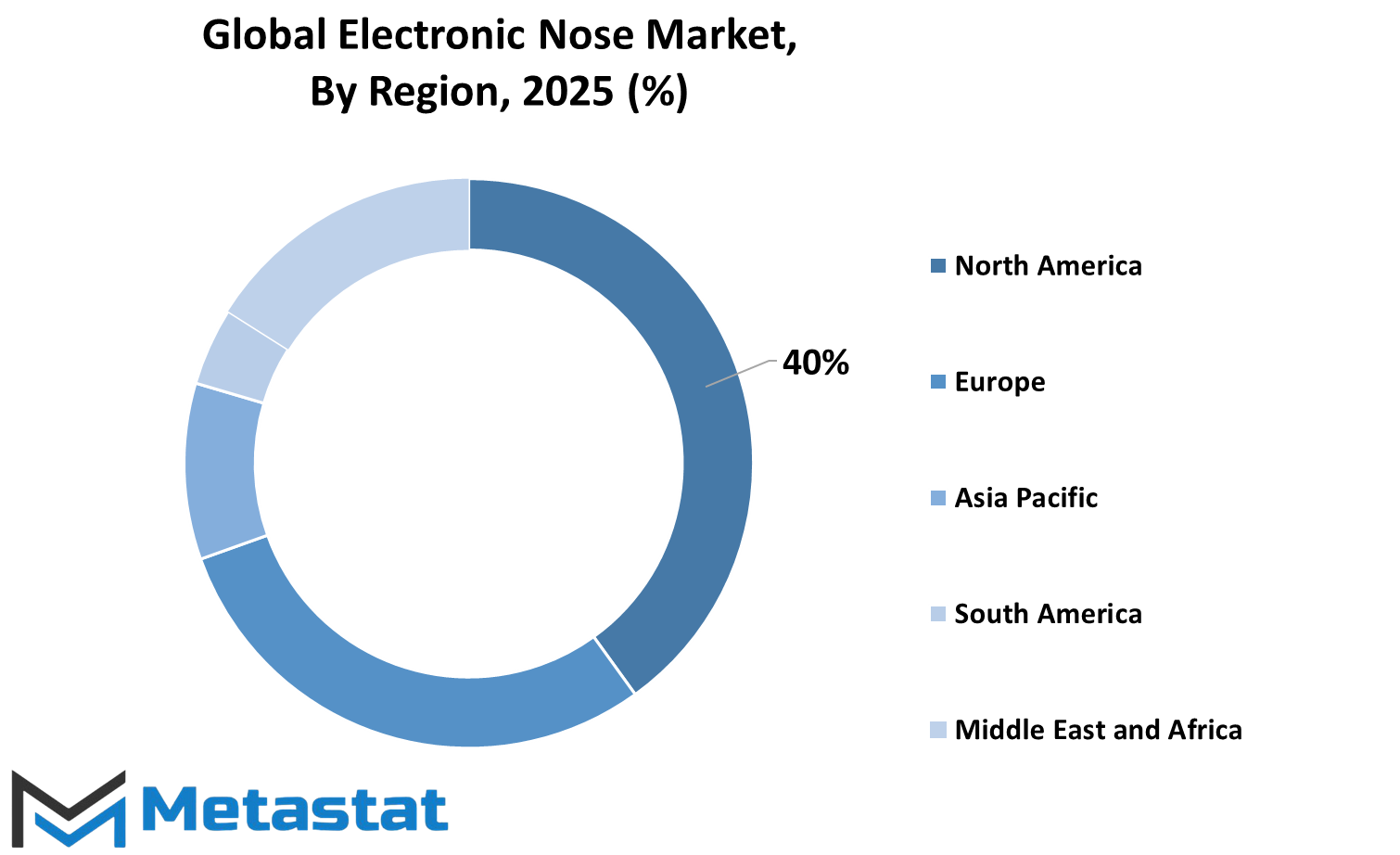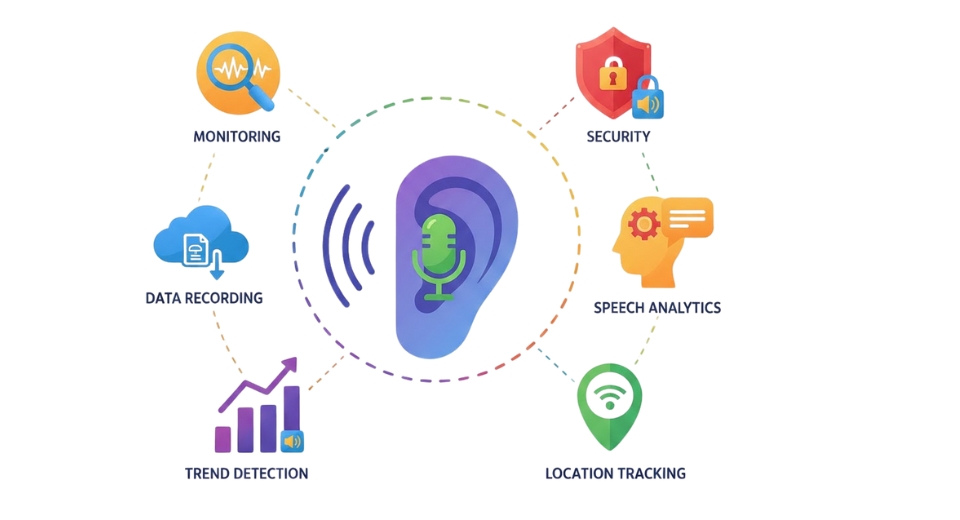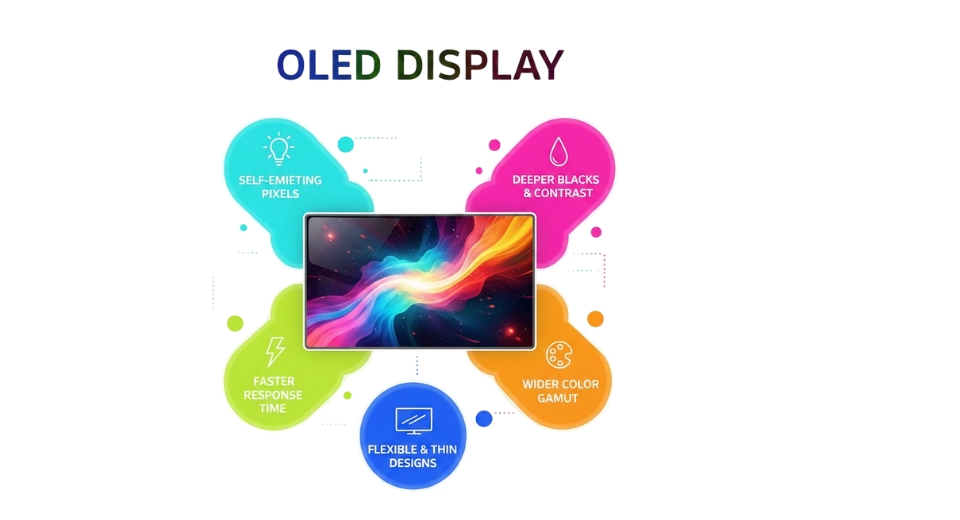MARKET OVERVIEW
The global electronic nose market has made its entry as an agent of change in sensory technologies diversifying applications such as advanced detection sensations in many industries. As industries like healthcare, food and beverage, environmental monitoring, and security converge on this technology, the path extends even further from traditional implementations. This advancement affords a very high measurement level in identifying and differentiating complex odours with sensor arrays and artificial intelligence. Such accuracy creates an optimal environment for applications that demand exacting odour analysis.
In the healthcare industry, the global electronic nose market promises major advances in disease detection. Researchers and medical practitioners are investigating the role of the electronic nose in diagnosing various conditions, including cancer, respiratory diseases, and infections, by analyzing breath biomarkers. The development of non-invasive diagnostic techniques would ultimately improve early detection and treatment plans, bettering the patient's experience. Further, the ability of machine learning and bio-sensing technologies, to continuously hone the accuracy of such devices, would herald the day when hospitals and diagnostic laboratories will routinely adopt their use for medical examinations.
Some industrious regions include the food and beverage sector in which the global electronic nose market is making very promising advancements. In this sector, maintaining the quality, detecting contamination, and ensuring more or less consistency of flavor profiles are very important. Food manufacturers will be entitled to monitor freshness, detect spoilage, and track counterfeit products more effectively with the electronic nose on board. Such precision shall hence become a must as consumers' wants for transparency and safety increases. Besides, systems based on automation backed up by this technology will bring more flow to production processes by minimizing human involvement and optimizing efficiency.
With the advancement of electronics noses, there are going to be important changes to the environment with its usage. Detection of hazardous gas amounts, contaminants, and volatile organic compounds empowers both the industry and the regulators for an upper hand in complying with air quality standards. Cities will have this real-time monitoring system for pollution levels running by different governments and organizations, thus facilitating fast responses to environmental hazards. Furthermore, electronic nose shall play a vital role in industrial safety because they will significantly reduce accidents caused by gazing or chemical exposures impossible to detect.
As much as it might be, changes in the environment are to be brought about with the advancement of electronic nose. Not only that, but also detection of possible hazardous gas amounts, contaminants, and volatile organic compounds makes industry and government regulators have an upper hand with air quality standards. Cities will have this real-time monitoring system for pollution levels running on different governments and organizations, thus facilitating fast responses to environmental hazards. Another significant aspect wherein electronic nose contribute is in industrial safety; with them, there is avoidance of disasters caused by leaks from gases and chemicals. In case of leaks, it might be undetected.
Global electronic nose market is estimated to reach $132.80 Million by 2032; growing at a CAGR of 10.19% from 2025 to 2032.

GROWTH FACTORS
The global E-nose market is predicted to walk into these booming prospects owed to the increasing actualities on the quality control and safety monitoring requirements across applications, such as food and beverage, pharmaceuticals, and environmental. These industries use real-time contaminants detection, product quality assessment, and compliance status evaluation from advanced, highly sensitive detection technologies to meet stringent regulations. Rapid, non-invasive, and reproducible analysis by electronic nose devices boosts demand, significantly minimizing reliance on classical laboratory tests. Given the studies and praise for improved efficiency and accuracy, it is expected that the adoption of these innovations continues to proliferate.
Technological advances have drastically enhanced the quality of electronic nose, making them more sensitive, selective, and portable. Development of sensors, advanced data processing, and enhanced data acquisition techniques make the idea more useful in real-life situations. These questions arise from the ability of electronic nose to detect a wider variety of compounds with much more accuracy in such applications. Despite previous improvements to different areas, including accuracy, sensitivity, and selectivity, the technology still does diverge barriers that hamper its use for broader areas. High initial investment costs on design and installation of electronic nose hinder the technology's penetration and use at small and medium enterprises. In addition, the complex nature of the technology calls for specialized training, limiting its general accessibility for common users.
Another aspect causing the hindered expansion of the market is the non-standardization and non-validation of the results from the electronic nose. Sensor performance diversity, varying environmental conditions, and different ways of sample preparation can be responsible for this inconsistency in data interpretation. Such is the scenario making it difficult for regulatory bodies to compose well-defined guidelines for their use, which could otherwise yield well-accepted techniques throughout the industry. An address to these standardization issues will have great implications towards an increased level of confidence and, therefore, more extensive adoption of electronic nose technology in regulated industries.
There are promising future opportunities for the global electronic nose market, despite these challenges. Artificial intelligence and machine learning are being incorporated to make electronic nose data more accurate and interpretable. AI models can learn from complex patterns and can minimize the chances of a false positive and enhance overall performance, making such systems more trustworthy and efficient. In the developing world, there will be promising applications in health diagnostics, agriculture, and homeland security extension. As long as industries understand artificial intelligence benefits in their operations with electronic nose, the market will continue to open and lead to more investment by industries and innovation over the coming decades.
MARKET SEGMENTATION
By Type
It is very true that global electronic nose market is advancing rapidly in technology and getting applications at different heights on the status of the industries. The expected demand in this segment increases significantly on the basis of a unique feature such as detection, identification, and analysis of complex odors through sensor technology. The spread of artificial intelligence and machine learning has further added to its accuracy and efficiency, rendering it more competent for quality control, environmental monitoring, health diagnostics, and food safety. A considerable amount of investment is made by different companies and research institutions to bring out the utmost sensitivity and response time in order for these devices to work really well in detecting even the minutest differences in the olfactory compositions at high precision levels.
Because electronic nose can replace human perception with fault-prone traditional modes of odor analysis, it is one of the factors affecting the uptake of electronic nose technology. The adoption of this sensing technology has become more widespread among industries demanding high-quality standards, for instance, food and beverage, pharmaceuticals, and cosmetic. In addition, the electronic nose serve a complementary role in medical diagnostics by indicating some diseases through breath analysis to detect certain biomarkers early. The main attention is drawn since this is a less-invasive method, where results are less time-consuming and complicated to generate than more complex testing standards.
The introduction of different types of electronic nose systems is bringing the market all the time. They include embedded sensors that integrate existing machinery in a continuous process, while portable devices provide movement and flexibility for analysis on the move. Both categories have found great acceptance across most industries seeking efficient solutions that will results in productivity improvements while at the same time meeting regulatory standards. As technology progresses, these devices will be made more durable and compact, allowing them to reach various application areas.
Even though the prospects are bright and promising, the market suffers from various problems, chief among them being very high costs, difficulties in the calibration process, and the requirement of regular maintenance. Nonetheless, continuous R&D work brings more innovative products to counter such limitations to making the technology more available and less costly. With industries looking forward to precision and automation, the global electronic nose market is expected to show a steady increase in the years to come. While the continued development advances, such use of electronic nose would transform the modern form of industrious practice and the medical soon with great strides of efficiency, safety, and quality assurance in many sectors.
By Technology
However, the global electronic nose market does not remain static because new technologies will keep driving it forward. Commercially, very much like in all industries, electronic nose find their applications in health-care, food and beverages, environmental monitoring, and security. Wherever they show an impression or likeness to the human sense of smell using sophisticated sensor technologies, one can found them very useful because they make applications more precise and efficient.
The market by technology is divided into different types including Metal Oxide Semi-Conductor Sensors (MOS), Quartz Crystal Microbalance (QCM), Conducting Polymers (CP), and other types. These technologies offer distinct advantages for numerous applications. For example, the very sensitive and reliable MOS sensors are widely used for detection of volatile organic compounds.
Thus, one can find them in industrial settings, where air quality monitoring is important. The QCM technology that can measure the smallest change in mass finds application in medical diagnostics and laboratory research. Conducting Polymers (CP) very flexible and responsive gas detection would be the sensor device used in compact portable applications. Emerging other sensor technologies will continue to add more precision, fewer error rates, and increased efficiency in electronic nose' functionality, thus widening their applicability in different sectors.
One critical reason for growing demand for electronic nose is an increase in requirement for quality control as well as detecting contamination. In the food and beverage industries, it helps in spoil detection by ensuring those safety production standards are satisfied before delivery to consumers. The healthcare industry uses the electronic nose in disease detection by analyzing the breath sample to identify some diseases such as diabetes and respiratory diseases. According to environmental agencies, they monitor ambient pollutants or harmful gaseous pollutants, which may significantly threaten public health. The same devices are also tied to security agencies for its security applications such as detection of explosives, narcotics and other hazardous substances.
The global electronic nose market is however faced with several limitations such as high manufacturing costs and complex calibration procedures. However, research and development will continue working toward improvement of the sensor technologies making them affordable and convenient. Industries will realize that these devices can yield a great deal and will, therefore, increase their investment dollars in electronic nose research and technology development for applications improvement. Advancements in AI and machine learning promise greater accuracy and flexibility for these devices, which will result in widespread adoption and unprecedented opportunities in odor detection and recognition analysis.
By End User
The global electronic nose market is gradually laying hold on the global industry as various industries look for advanced technologies to detect and analyze odors. These devices are, in essence, a substitute for the human nose, performing effectively across diverse applications. The dissecting power of electronic nose to recognize patterns and differentiate between smells serves several sectors. Industries related to quality assurance, safety, and monitoring increasingly incorporate this technology in their operations.
Military and defense applications are perhaps the most varied and inarguably the prime application of the electronic nose. While these instruments help in detecting hazardous gases, explosives, and chemical threats, thus providing safety in very high-risk environments, they permit real-time analyses, allowing for prompt responsive actions by security personnel toward any perceived threat. Worthy of mention, yet another industry for the commercialization of this technology is the health sector. Hospitals and medical research centers apply electronic nose for the breath analysis in the diagnosis of diseases. This form of testing, being non-invasive, can greatly aid early diagnosis when a physician can identify the condition early.
Electronic nose technology is used in the food and beverage industry for quality control. Manufacturers use electronic nose to check for freshness, contamination, and uniformity in product quality. This will ensure that food and beverage products pass muster in aroma profiling before they get into the hands of consumers. Waste management and environmental monitoring also make use of this technology to identify harmful emissions and pollutants. With the early detection of air quality problems, authorities take necessary actions to minimize hazards to the environment. Other applications for electronic nose arise in yet other industrial sectors where scent detection is key.
The growth of the global electronic nose market is expected to continue as many more industries recognize the relevance of this technology. Companies improve on these devices in other aspects such as accuracy, response time, and durability to make them perform better. All this will drive the increased development and research of odor detection solutions into higher innovations that may soon mainstream electronic nose into most sectors and present a great boon to modern industries.
|
Forecast Period |
2025-2032 |
|
Market Size in 2025 |
$80.98 million |
|
Market Size by 2032 |
$132.80 Million |
|
Growth Rate from 2025 to 2032 |
10.19% |
|
Base Year |
2025 |
|
Regions Covered |
North America, Europe, Asia-Pacific, South America, Middle East & Africa |
REGIONAL ANALYSIS
Hence, the gobal electronic nose market shall be categorized according to regions including: North America, Europe, Asia Pacific, South America, and the Middle East and Africa. Within North America, it is inclusive of the U.S., Canada, and Mexico. Europe comprises mostly the UK, Germany, France, and Italy with other European countries. The Asia Pacific region would account for countries such as India, China, Japan, and South Korea; all other nations are grouped under the Rest of Asia-Pacific. In South America, the market is captured in Brazil and Argentina, while the other countries are under the Rest of South America. The Middle East & Africa region is further categorized into GCC Countries, Egypt, and South Africa, with other nations grouped as the Rest of the Middle East & Africa.
This type of regional classification goes a long way toward understanding market trends, consumer demand, and also in technology changes and innovations in different parts of the world. Most of all, above North America, the electronic nose market is really thriving as it focuses on research and initiatives. The presence of advanced industries, particularly in health care, food safety, and environmental monitoring, acts as a driver for the demand of these devices. In Europe too, with its strict regulations on quality control and industrial safety, is also expected to grow with investments by Germany and France in developing state-of-the-art sensor technologies.
Importance in the Asia-Pacific region continues to grow due to rapid industrialization and the increasing applications of electronic nose in various areas such as food and beverage quality testing, medical diagnostics, and pollution detection. China and India are investing in research and development of electronic nose to improve their efficiency and make them cheaper and more accessible. About this time, the technology is also being adopted in South America, with Brazil and Argentina leading the drive; it is being applied mainly in agriculture and the environment to detect contamination and keep products safe.
The region presently being referred to as the Middle East and Africa is witnessing immense industrial growth centered around air-quality monitoring as it looks toward future market prospects. The increased attention from the GCC countries, along with South Africa and Egypt, in adopting this technology, especially in healthcare and security applications, is expected to gain even more growth in the near future. As industries all over the world recognize the benefits of electronic nose technology into their operations, it is expected that the adoption of this type of technology will increase further and become an integral part of industries worldwide.

COMPETITIVE PLAYERS
Because of its various applications, the global electronic nose market is an area of interest to industries. Mimicking the human nose, this technology provides an overhaul of many sectors, including health care, environmental monitoring, food safety, and security. The high-tech artificial intelligence and advanced sensor technology being developed are leading commercial applications of electronic nose that provide accurate on-the-spot analysis of volatile compounds. Their increased need for efficient identification and analysis of odors is anticipated to lead to widespread application in industries.
In health care, electronic nose play a distinguishing role in breath analysis and diagnosis of diseases. Researchers keep trying to perfect these devices to detect diabetes, cancer, and infection at very early stages. Non-invasive options such as these make for impressive tools for a medical professional looking for safe and fast diagnosis. Likewise, environmental monitoring seems to include the use of electronic nose for pollutant detection, hazardous gases, and air quality variation. These devices are also a source of assurance to authorities for ensuring safety standards and subsequently addressing environmental issues.
The application of electronic nose would also find a definite place in quality assurance, detecting spoilage, and offering food and beverage consistency. These devices include aroma profile analysis, ensuring products meet the standards demanded before they reach the consumer. Other security-related applications in electronic nose include the detection of explosives, drugs, and other hazardous materials. The ability to identify specific chemical compositions signifies an important aspect of public safety.
Advancements in the global electronic nose market are propelled by key players through innovation and integration of newer technologies. Alpha MOS, Airsense, Odotech, Sensigent, Electronic Sensor Technology, RoboScientific Ltd, The eNose Company, E-Nose Pty Ltd, Noze, Scentroid, Comon Invent B.V, Plasmion GmbH, Envirosuite, Aryballe Technologies SAS, Scent Science Corporation, and Chromatotec have global operations integrating electronic nose that are being intensely researched to improve their efficiency, sensitivity, resolution, and areas of application. As competition intensifies, these companies are focusing their energy toward innovations that will enhance performance and market penetration.
Research and development are gaining pace as industries are beginning to appreciate the applications of electronic nose. Companies are working on further improving sensor reliability and data processing potential while enhancing miniaturization to make the devices more widely accessible across different sectors. Continued technology improvement is going to surely spur up the application of electronic nose, which shall, in turn, further transform diverse industries providing time and cost-efficient odor detection solutions. This fact will probably serve as fuel for further innovations, solidifying the niche for electronic nose in modern industrial applications.
Electronic Nose Market Key Segments:
By Type
- Embedded Sensors
- Portable Devices
By Technology
- Metal Oxide Semi-Conductor Sensors (MOS)
- Quartz Crystal Microbalance (QCM)
- Conducting Polymers (CP)
- Other
By End User
- Military and Defense
- Healthcare
- Food and Beverage
- Waste Management (Environmental Monitoring)
- Others
Key Global Electronic Nose Industry Players
- Alpha MOS
- Airsense
- Odotech
- Sensigent
- Electronic Sensor Technology
- RoboScientific Ltd
- The eNose Company
- E-Nose Pty Ltd
- Noze
- Scentroid
- Comon Invent B.V
- Plasmion GmbH
- Envirosuite
- Aryballe Technologies SAS
- Scent Science Corporation
WHAT REPORT PROVIDES
- Full in-depth analysis of the parent Industry
- Important changes in market and its dynamics
- Segmentation details of the market
- Former, on-going, and projected market analysis in terms of volume and value
- Assessment of niche industry developments
- Market share analysis
- Key strategies of major players
- Emerging segments and regional growth potential








 US: +1 3023308252
US: +1 3023308252






